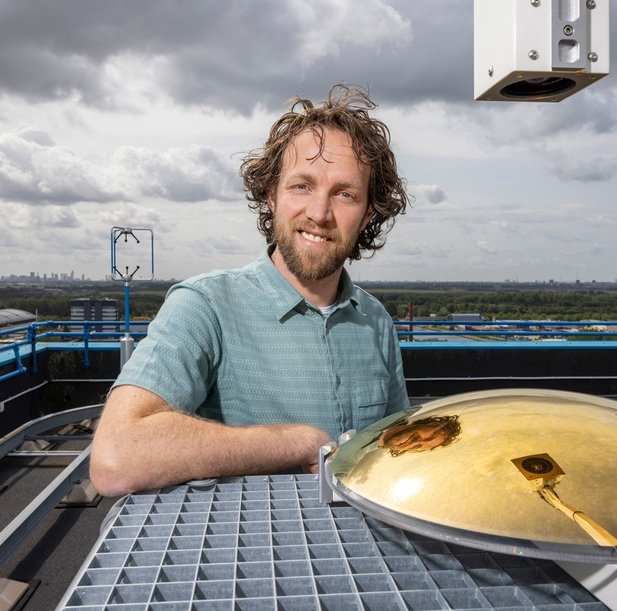NWO Open Technology Programme funding for Rudolf Saathof
Rudolf Saathof has been awarded funding from NWO under the Open Technology Programme for his research proposal DAILSCOM, which aims to create a geographical map describing the quality of laser-satellite communication channels.

DAILSCOM: Atmospheric Turbulence Informed Machine Learning for Laser Satellite Communications
Laser satellite communications is a promising technology to support global access to telecommunications services.
Saathof: "By using laser satellite communications, we aim to improve global access to broadband internet and meet the continuing demand for more data bandwidth and better data security."
This requires finding a way to reduce the influence of the atmosphere on the laser beams. These atmospheric disturbances can affect the quality of the communication channel. This can be improved by using adaptive optics, a technology that compensates for phase distortions in the laser beam in real time using a deformable mirror. Another solution is to distribute the laser communication stations on the ground over several locations, so that communication can take place from the site with minimal atmospheric disturbance. The latter is the focus of the DAILSCOM project.
The creation of a geographical map describing the quality of communication channels makes it possible to design a network of ground stations and predict the availability of communication services. It also ensures that the requirements to be met by laser-satellite communication systems become clear. As this geographical map requires a lot of computing power, this research develops new machine learning models based on physical principles. In this way, a detailed map can be produced efficiently.
The Open Technology Programme provides funding for excellent research, with a view to potential application of the results. The programme gives companies and other organisations a low-threshold way to join scientific research that should lead to applicable knowledge. In total, NWO is funding seven research projects with a total of 5.8 million euros. Companies and other organisations involved invest about 950 thousand euros in the projects.